Vaccines, stimulus hopes put ASX back into green for year
Australia’s sharemarket has powered into the green for the year to date as euphoria over coronavirus vaccines and US fiscal stimulus continues to build.
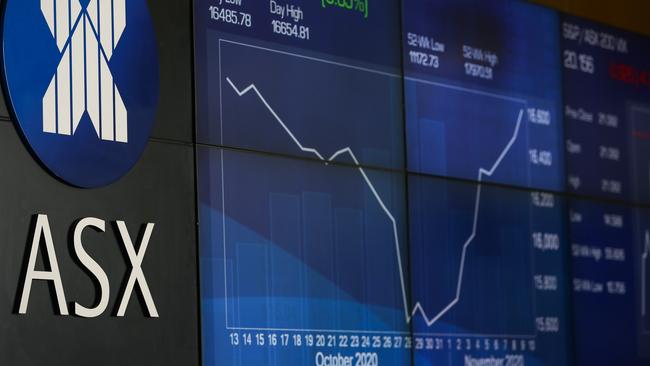
Australia’s sharemarket has powered into the green for the year to date as euphoria over coronavirus vaccines and US fiscal stimulus under a Joe Biden administration continues to build.
After rising 41 points, or 0.6 per cent, to a nine-month high close of 6728.5 points on Wednesday, the benchmark S&P/ASX 200 index has risen in each of the past seven days amid a crescendo of takeover activity and sharemarket floats, some of which have yielded impressive stag profits.
For the second day running the index closed above its December 31, 2019, level to be up 0.7 per cent since then. While the index briefly turned up for the year last month, this week marks the first sustained move into the green, giving index funds something to cheer about this Christmas.
The index was also close to turning positive on a rolling 12-month basis.
After surging 10 per cent in November — its biggest month since inception in 2000 — the S&P/ASX 200 is up 3.2 per cent this month, exceeding its 20-year average for December of 1.2 per cent.
The Australian sharemarket lagged in the early stages of the global recovery since March as the combination of unprecedented monetary policy stimulus globally, the worst recessions since World War II and shifts to work-from-home and online shopping saw investors favour the tech-heavy US market.
But the local bourse started outperforming two months ago as Australia’s world-leading fiscal stimulus shored up the major banks and surging iron ore miners boosted the big miners.
After plunging as much as 39 per cent from a record high of 7197.2 to a 7½-year low of 4402.5 in its fastest-ever bear market (spanning an extremely volatile four weeks in February and March), the index has bounced 53 per cent in its fastest-ever bull market, to be just 7 per cent off a record.
Amid fast-moving markets after the unprecedented fiscal and monetary policy response that followed economic shutdowns in response to the coronavirus pandemic, Wilson Asset Management chairman Geoff Wilson said the key to successful investing for active fund managers this year had been having the flexibility to adapt to rapidly changing market fundamentals.
“You needed to have significant flexibility,” Mr Wilson told The Australian.
“We aim to buy undervalued growth companies so when it became clear in late February that COVID was a global problem, we had to rejig the portfolios and increase our cash levels.”
Small to mid cap-focused WAM Capital boosted its cash to 43 per cent in late February — well above its long-run average of about 30 per cent — as the relative illiquidity of its portfolio demanded a rapid readjustment, the first part of which was a move to cash. WAM Global and WAM Leaders moved to about 15 per cent cash at the time.
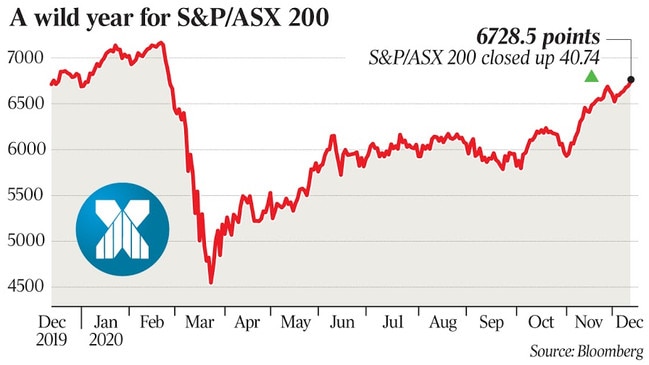
With their more liquid portfolios, they could more easily pivot away from suddenly challenged business models and into the companies they thought would survive or even benefit from the post-COVID themes as many in the tech and consumer discretionary space have done.
But after putting cash to work in recent months, WAM Capital has only 15 per cent in cash — about half as much as its long-run average — while WAM Leaders and WAM Global have less than 10 per cent.
“It’s largely a function of incredibly accommodative policies,” Mr Wilson said.
“There are definitely excesses but it’s not widespread and history shows the US sharemarket does a lot better under a Democratic president than a Republican president from inauguration.”
Looking forward to next year, he sees no threat to the current high sharemarket valuations while interest rates are low and there is little evidence of inflation in consumer prices.
As well, Mr Wilson sees a rebound in earnings from greater US fiscal stimulus and economic reopenings as coronavirus vaccinations get under way.
“Even though there are excesses, we saw a significant move up in November along with a growing expectation that the market will continue to go up, so there’s definitely pockets of extreme overvaluation and froth,” he said. “We are cautiously optimistic going into 2021.”
His bullish outlook is consistent with business and consumer surveys in Australia this week.
NAB’s Monthly Business Survey on Tuesday showed business confidence rose to a 31-month high — almost as high as the 2010 peak — while business conditions reached a 20-month high.
NAB chief economist Alan Oster said the survey was consistent with a rapid rebound in the economy as mobility restrictions are eased and state borders open up, albeit this partly reflecting some “snapback” following the containment of the virus.
“Encouragingly, other lead indicators improved in the month, with a large rise in capacity utilisation and forward orders turning positive, the latter suggesting that the pipeline of work had begun to build,” Mr Oster said. “That said, there is some way to go before a full recovery is reached.”
Similarly, Westpac’s Consumer Confidence index surged again in December to a decade high, as Victoria’s reopening added further impetus to a rebound in sentiment that has far outpaced previous recessions.
Westpac chief economist Bill Evans said it seemed “clear that sentiment has fully recovered”.
But WAM’s Mr Wilson said: “The tough thing is … when we put all these positives together I worry that I’m getting too positive.”


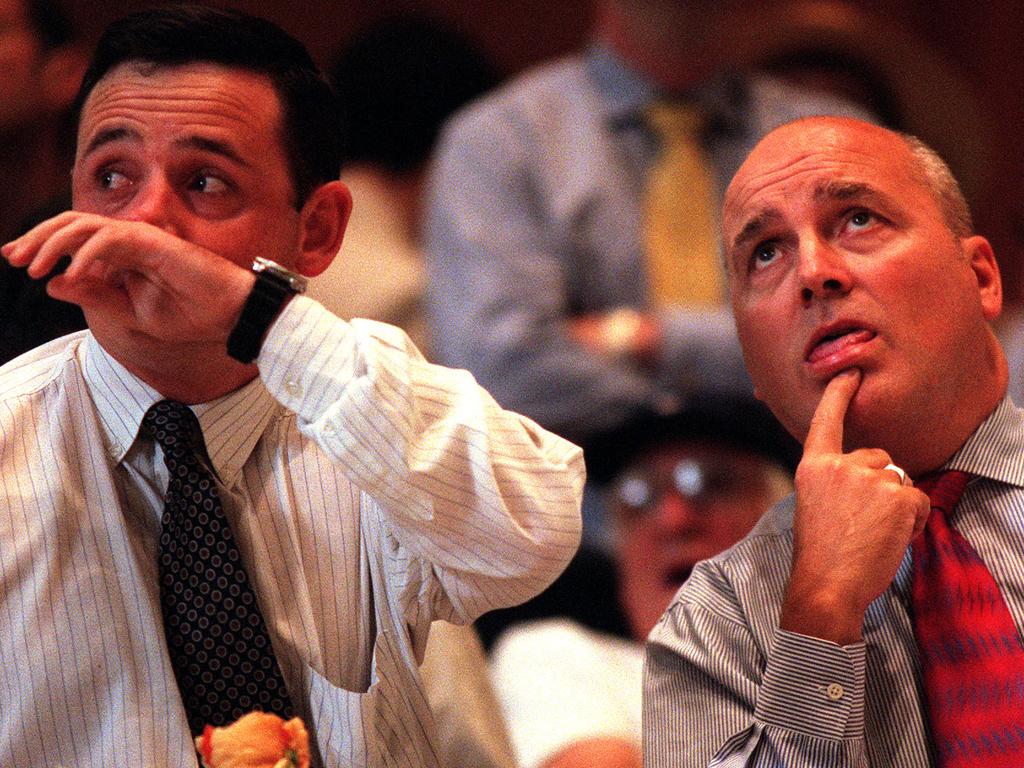
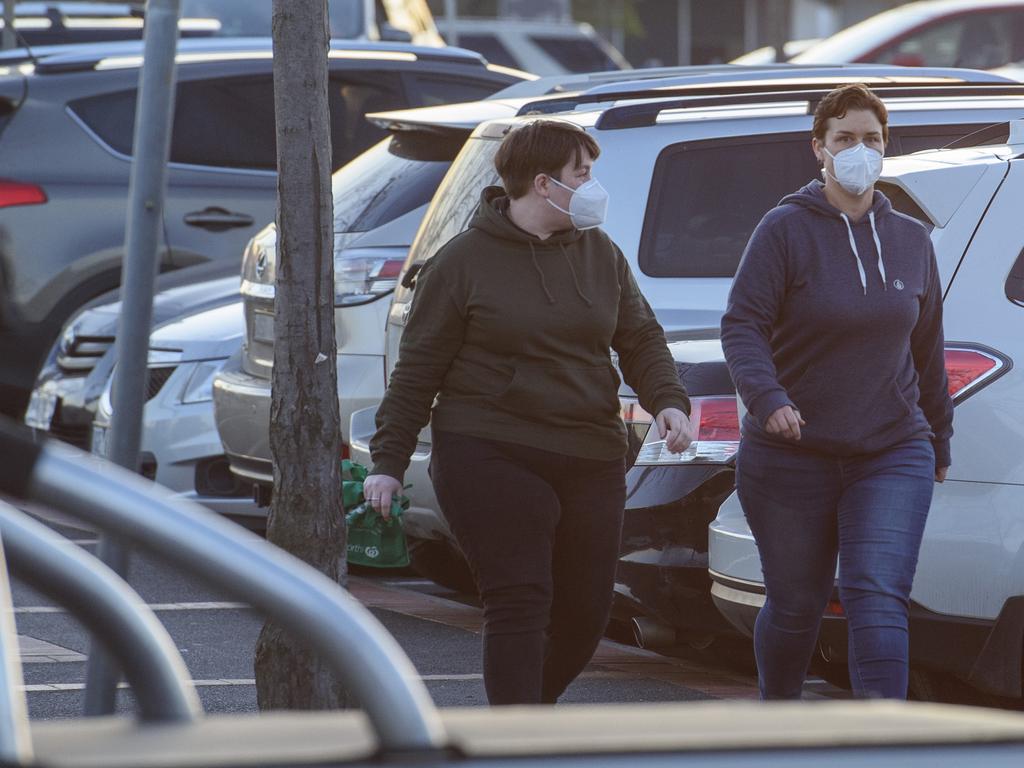

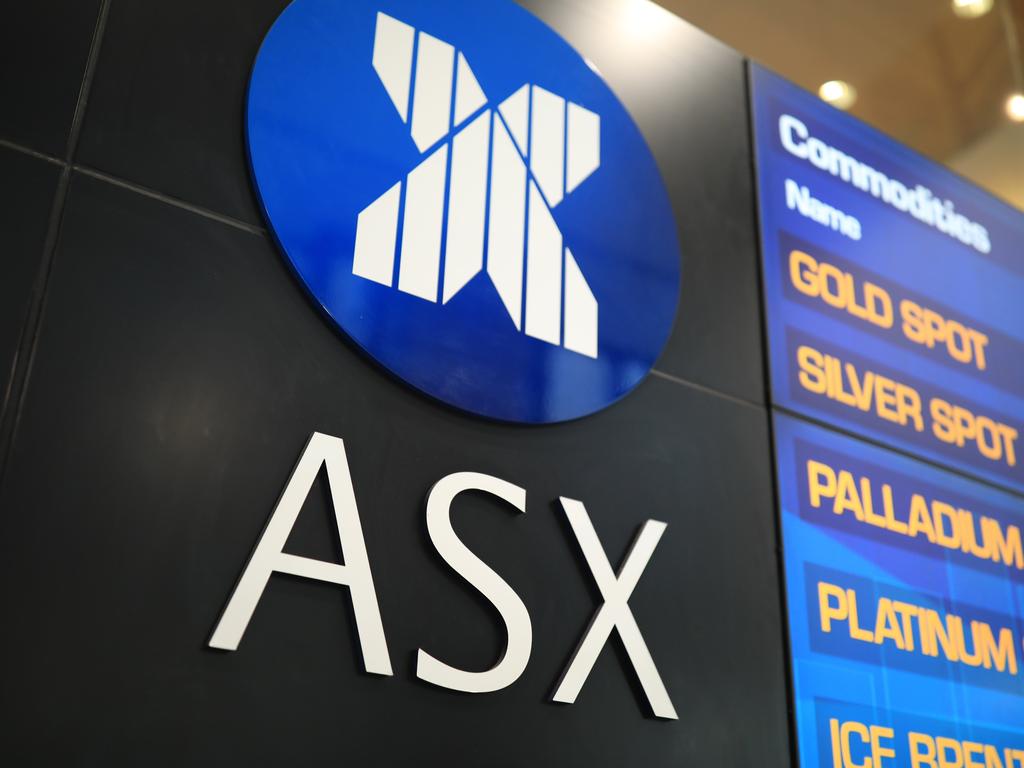


To join the conversation, please log in. Don't have an account? Register
Join the conversation, you are commenting as Logout